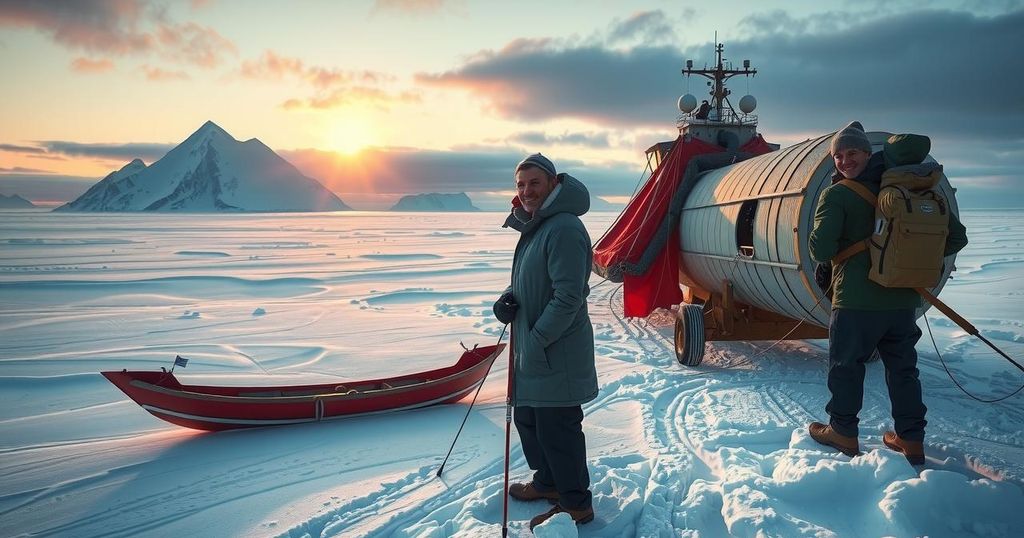Chile’s President Gabriel Boric made history with his visit to the South Pole on Friday, being the first Latin American president to do so. The trip, titled Operation Pole Star III, aims to improve environmental monitoring in Antarctica. Accompanied by scientists and military leaders, Boric’s visit reinforces Chile’s interests and claims in the region while upholding scientific cooperation as defined by the Antarctic Treaty.
Chile’s President Gabriel Boric embarked on a monumental expedition to the South Pole on Friday, marking the first visit to this landmark by any Latin American president. The two-day venture, designated Operation Pole Star III, aims to bolster environmental monitoring of pollutants on the continent, as articulated by the Chilean government. Accompanied by scientists, military leaders, and government officials, President Boric journeyed from Santiago to Punta Arenas, before making multiple stops that took them ultimately to the US-administered Amundsen-Scott South Pole Station.
Chile, one of seven nations claiming territory in Antarctica, joining Argentina, Australia, France, New Zealand, Norway, and the United Kingdom, holds a significant role in scientific exploration in the region. The nation is also a signatory of the Antarctic Treaty, which establishes the continent’s use solely for peaceful and scientific endeavors. Historically, while Chile has conducted scientific activities primarily in Antarctica’s northern sector, the government aims to expand research efforts into the western regions of the continent.
President Boric expressed pride in this momentous journey, referring to it as an “honor” and a significant milestone. He stated, “This is a milestone for us. It is the first time a Chilean and Latin American President has visited the South Pole.” The President emphasized the importance of this visit as a demonstration of Chile’s ongoing commitment to maintaining Antarctica as a realm dedicated to science and peace, a reaffirmation of his country’s sovereign claims over the area. He noted, “From here everything is north: there are only 12 flags flying. One of them is the Chilean flag and that is a source of pride.”
President Boric shared a video on social media during his visit, showcasing his engagement with the environment, which he dubbed as the origin of his country, stating, “Good morning from Chilean Antarctica, where everything begins.”
The significance of President Boric’s visit to the South Pole stems from Chile’s historic involvement in Antarctica. As one of the countries with territorial claims, Chile has regularized its role through scientific research and environmental monitoring as defined by the Antarctic Treaty. This treaty serves as a critical guideline for ensuring that the continent is utilized solely for peaceful and scientific purposes, allowing for collaborative exploration among nations. Furthermore, the broader implications of this visit touch upon issues of national sovereignty and international cooperation in the face of environmental changes affecting the polar regions.
In conclusion, President Gabriel Boric’s historic journey to the South Pole underscores not only a significant political milestone for Chile but also emphasizes the country’s commitment to scientific research and environmental stewardship in Antarctica. This visit not only highlights the importance of international treaties like the Antarctic Treaty but also strengthens Chile’s assertion of sovereignty in a region critical for global environmental health. As President Boric noted, maintaining Antarctica as a continent of peace and science is vital for future generations as well as for geopolitical stability.
Original Source: www.cnn.com






